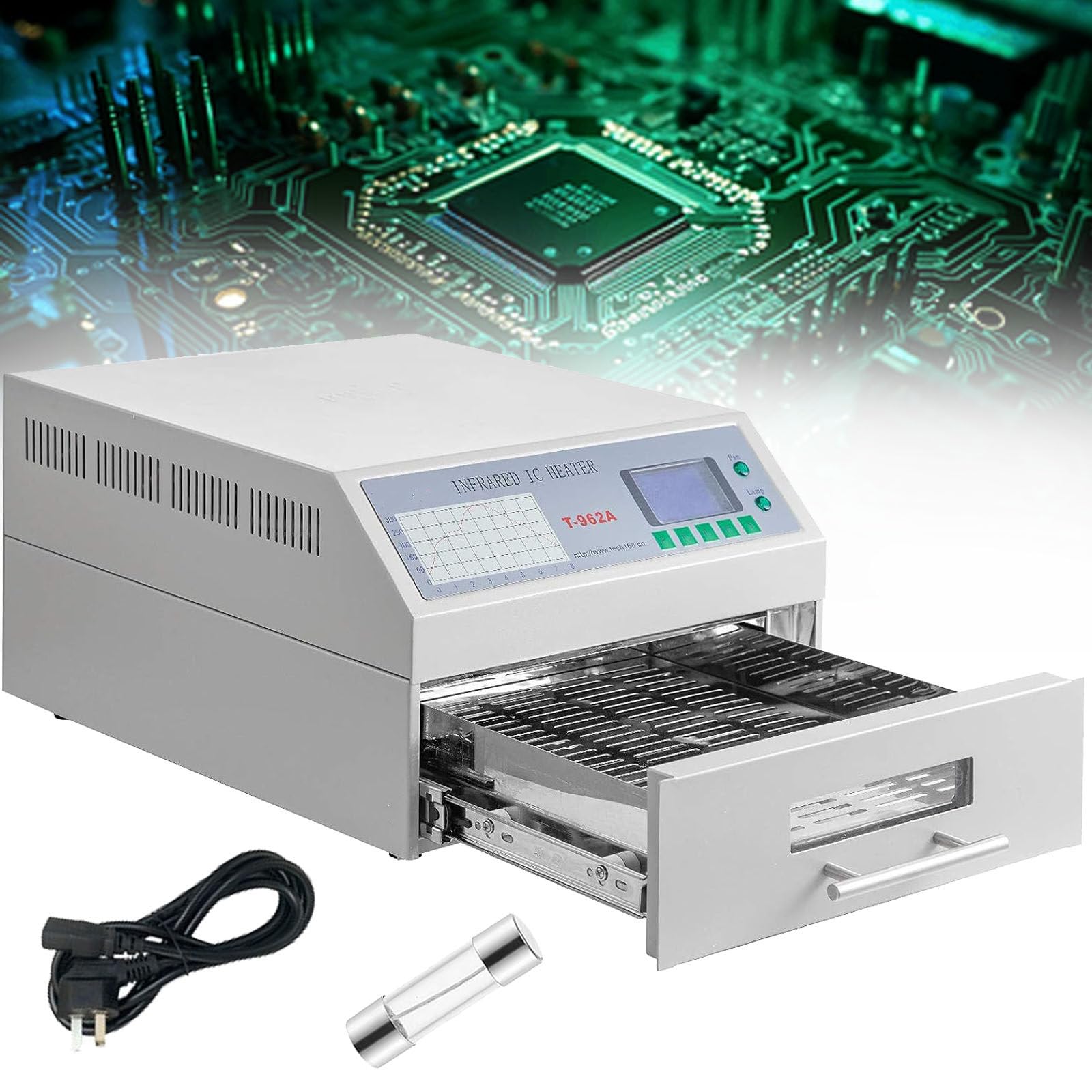Reflow soldering is a widely used technique in electronic assembly that ensures precise and reliable connections between components on a circuit board. This article explores the importance of reflow soldering precision and its impact on the overall quality and performance of electronic devices. Additionally, it discusses the key factors that affect reflow soldering precision and provides strategies and techniques to achieve optimal results.
1. The Importance of Reflow Soldering in Electronic Assembly
Reflow soldering is a crucial process in electronic assembly, as it ensures the reliable and efficient connection between electronic components and circuit boards. As a technician, I understand the significance of this method in producing high-quality electronic devices. Reflow soldering involves melting solder paste, which contains a mixture of tiny metal balls, onto the surface of the circuit board. This method allows for precise placement of components and the formation of strong solder joints. The controlled heating and cooling process during reflow soldering ensures that the solder fully solidifies, creating a secure and durable connection. Without reflow soldering, electronic assembly would be more challenging, and the risk of faulty connections or malfunctioning devices would significantly increase.
2. Factors Affecting the Precision of Reflow Soldering

Factors that affect the precision of reflow soldering are crucial to consider for any electronic manufacturer. The first factor is the temperature profile during the reflow process. It is important to accurately control and monitor the temperature at different stages to ensure the solder joints are formed correctly. Another factor is the type of solder paste used. Different solder pastes have varying melting points and characteristics, so selecting the right one for the specific components and circuit board is essential. Additionally, the size and design of the components being soldered can affect precision. Smaller and more intricate components require more precise temperature control and positioning. Finally, the cleanliness of the circuit board and components is crucial, as any contamination or impurities can lead to poor soldering results.
3. Understanding the Soldering Process in Electronic Assembly
As a woman working in electronics assembly, I have found it essential to have a thorough understanding of the soldering process. Soldering is a critical step in electronic assembly, as it provides a strong and reliable connection between components on a printed circuit board (PCB). By heating a solder wire and applying it to the joint, the solder is melted and forms a bond between the component and the PCB pad. It is important to ensure that the solder joint is properly formed, with no voids or cracks, to prevent any potential failures in the final product. Understanding the different types of solder, the proper temperature settings, and the correct techniques for soldering various components is crucial for producing high-quality electronic assemblies. Therefore, as a woman in this field, I strive to continuously improve my skills and knowledge in the soldering process to contribute to the success of my team and the overall quality of the final product.
4. Techniques for Achieving Higher Precision in Reflow Soldering
In this section, I will discuss some effective techniques for achieving higher precision in reflow soldering. As a professional in the field, I have found these methods to significantly improve the quality of solder joints. Firstly, it is crucial to ensure that the surface mount components are properly aligned before the soldering process. This can be achieved by using precise tools such as alignment jigs and placement machines. Secondly, controlling the temperature profile during the reflow process is essential for achieving higher precision. By carefully monitoring the temperature and ramp rates, we can prevent issues like tombstoning or solder bridging. Finally, investing in high-quality solder paste and stencils can make a substantial difference in the overall precision of the soldering process.
5. Common Challenges in Achieving Precision in Reflow Soldering
One common challenge I have experienced in achieving precision in reflow soldering is the issue of inconsistent temperature profiles. It is crucial to ensure that the temperatures within the reflow oven remain consistent throughout the entire soldering process. However, variations in temperature can occur due to factors such as inadequate thermal profiling or malfunctioning equipment. These temperature inconsistencies can result in uneven heating of the components and solder joints, leading to poor soldering quality. To overcome this challenge, I make sure to regularly calibrate and monitor the temperature profiles of the reflow oven, as well as perform maintenance on the equipment to prevent any malfunctions. Additionally, I pay close attention to the thermal profiling process to ensure accurate and consistent temperature control.
6. Advancements in Reflow Soldering Technology for Enhanced Precision in Electronic Assembly
As a woman working in the field of electronic assembly, I have witnessed incredible advancements in reflow soldering technology that have greatly enhanced precision in our work. With the traditional wave soldering method, there were limitations in terms of accuracy and consistency. However, with the introduction of reflow soldering, we now have the ability to achieve highly precise and reliable solder joints. The technology allows for a controlled heating process that ensures uniform distribution of heat, resulting in consistent melting and bonding of solder. Moreover, the introduction of advanced automation systems further enhances our efficiency and reduces the risk of human error. These advancements have significantly improved the quality of electronic assemblies, enabling us to meet the increasing demands of the industry with utmost precision and reliability.
Conclusion
In conclusion, reflow soldering plays a vital role in ensuring the precision and reliability of electronic assemblies. By carefully controlling factors such as temperature, time, and solder paste composition, manufacturers can achieve high-quality solder joints with minimal defects. As technology continues to advance, it is essential for electronic assembly professionals to stay updated on the latest reflow soldering techniques and equipment to meet the increasing demands of the industry.
What is reflow soldering?
Reflow soldering is a method used in electronic assembly to solder surface-mounted components onto a printed circuit board (PCB).
How does reflow soldering work?
Reflow soldering works by heating the solder paste applied to the PCB, causing it to melt and bond the components to the board.
What are the advantages of reflow soldering?
Reflow soldering offers several advantages, including faster assembly times, higher precision, and better overall quality of solder joints.
Are there different types of reflow soldering?
Yes, there are several different types of reflow soldering processes, including convection reflow, infrared reflow, and vapor phase reflow.
What factors affect reflow soldering precision?
Several factors can affect reflow soldering precision, such as temperature profiles, solder paste composition, and component placement accuracy.
What are some common challenges in reflow soldering?
Common challenges in reflow soldering include solder bridging, tombstoning, and component misalignment, which can all impact the precision of the assembly process.

